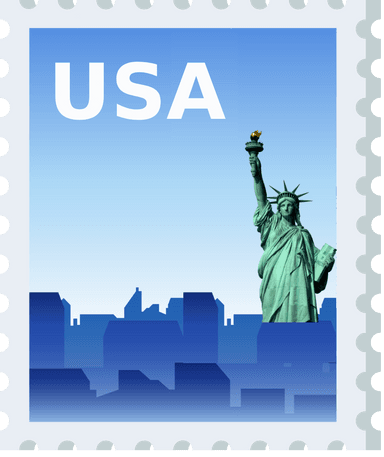Building Custom Financial Management Software: Your Comprehensive Guide

Quick Summary: Building a custom financial software development is a smart business move. These days, many users that the majority of their day on mobile devices. So, building a personal finance app helps an individual save time and effort while managing money.
What is a Personal Finance App?
Personal finance apps are designed to help individuals manage their finances and make informed decisions. They aim to empower users with better financial management, budgeting, and tracking capabilities, ultimately helping them make informed decisions about their money.
Role of a Personal Finance App
A personal finance app is a huge time saver, bringing all your money matters under one umbrella and making it convenient for you to check things like your bank balance and available credit. The role of a personal finance app is to make your life easier. How? By facilitating better financial management.
Here are some key roles that a personal finance app typically plays:
- Expense Tracking and Categorization
- Budgeting and Goal Setting
- Bill Reminders and Payment Management
- Financial Planning and Analysis
- Financial Education and Insights
- Security and Data Privacy
- Integration with Financial Accounts
Types of Personal Finance Apps
A mobile application that can give you the ability to organize your financial life is always a plus. Here are two types of personal finance apps that can help you manage your money in more ways than one.
Simple Financial Apps
SavingsTracker is easy to use and visually appealing personal finance app for tracking all your income, expenses, and savings. The main view of the program consists of a table with two pivot tables, one for income items, and the other for expense items. Besides manually adding records and indicating categories of purchases and income, this app allows users to specify how frequently they record transactions. You can choose monthly, daily, or weekly intervals.
Complex Financial Apps
First, it allows the users to link their cards and bank accounts for automatic data synchronization. Then, with advanced tools, it fetches the needed information from your accounts. Second, it analyzes your financial situation and makes suggestions for improvement – all at the push of a button. Finally, you get carefully tailored tips and guidance that help you make better spending decisions. The result? Another month – or year, even – where you are in the black and manage to save a few bucks along the way!
How to Create a Personal Finance App?
Understand Your App User: When we talk about user experience (UX), user intentions should be given top priority. One of the most important aspects of UX is to know your target audience. Knowing your user well can simplify many things for you — it helps build a better product, identify the features required, and build an effective promotional plan for your app. Therefore, research and defining critical demographical criteria to draw a user persona should be the first step.
Conduct Competitor Research: A/B testing is a crucial step in the processes of marketing and growth hacking. The ability to take note of the best practices from your competitors, as well as well-designed and properly-executed tests, are surefire ways to improve results. The primary purpose of A/B testing is to analyze which landing pages lead to the most conversions for specific marketing campaigns.
Identify The Problem: To build an app that would stand out in the market, you must identify the problem it aims to solve. A product that is well executed can become immensely popular if it solves a gaping need or pain point, or if it offers a brand-new technology or capability. Is there any new technology that would make the user experience smooth? Can your app solve a problem that other existing financial apps have overlooked?
Security is The Key: Users trust their finances to financial apps, it means the problem of data security is a real challenge for the fintech industry, which deals with people’s money all the time. Financial apps have an advantage over banks since they are more responsive to users’ needs and, in general, they facilitate the way to perform financial operations and payments. However, this doesn’t mean that they are inexorably protected from hacker intrusion. This makes security a priority mission for fintech solutions
Select a Tech Stack: As a developer, the tools and technology you use shape the app. In fact, the choice of tools is one of the most important aspects when building a product. You would need to decide on all tools you need for development including databases, programming languages, frameworks, etc.
Build a Convenient UX Design: A user’s experience with a financial app should be simple and straightforward. Whether they’re entering data or using payment functions, the app should use logical flows and terms that users understand. It should also make it easy for users to complete tasks. The app’s UI will play a big role in achieving this by making sure users are able to access all of its features.
Testing: When the process of development of your personal finance app is finished, you are ready with your first MVP (minimum viable product), and your QA team is testing the app, they must now test the app in a rigorous way. You cannot take risks when it comes to people’s money since there are serious consequences that could be catastrophic. Be sure to test everything you can to ensure that your financial app will work perfectly. The method of testing a personal finance application is different from the one used for other applications — it has to be more rigorous and comprehensive.

Key Features to Include in Your Personal Finance App
Personal finance apps can help you manage your money, and make sure you stick to your financial resolutions.
Registration And Onboarding: The simplicity of your mobile app makes it user-friendly and helps you to retain users. The more time a user spends on an app, the better is their experience. To make sure that your users don’t feel burdened with excessive data input or verification, you must prepare a smart app with an easy registration process.
Account Integration: A budgeting app should be able to gather all financial accounts of its user. Just to give you a better idea, these accounts include credit cards, debit cards, loans, bank accounts, and mutual funds. In short, your app should be a one-stop solution for everything about money management.
Insightful Advice via AI Chatbots: Artificial intelligence (AI), one of the most promising technologies is becoming more and more popular. It is most commonly associated with robotics, but its applications are far broader. One of the most innovative and rapidly developing industries in the world is fintech. Banks and other financial institutions are using AI to gain a competitive advantage, boost productivity, and reduce costs.
Real-time Spending Tracker: Features that come with a money management app exist to align with the user’s goal. A common and effective one is real-time tracking. Not only does it help track your expenditure on an ongoing basis but it prevents you from making mistakes that may affect your budget. If in case you forgot to update your spending, the app will notify you the very moment you try to move forward with transactions.
24×7 Customer Support: Today, trying to run a business without customer support is almost impossible. When you offer 24x7x365 customer support you are providing an unprecedented level of care to your customers, creating peace of mind, and helping them feel needed.
Financial Advice & Consultation: It’s very important to make sure your app also provides financial suggestions and advice from experts. This would benefit users as they’ll learn about additional ways to save money, invest, and keep track of their expenses.
Conclusion
The apps are designed to cater to the needs of people at different stages of the financial journey. The best personal finance apps help you make prudent financial decisions, especially in areas where overspending could harm your finances. Brain Inventory is an award-winning financial software development company with vast experience crafting remarkable digital success stories for diverse companies. We craft visually appealing, user-friendly, and highly effective digital solutions that promise to boost your business to the next level.

Have an idea?
Get in touch, we’d be
happy to hear from you
We are always looking out for new collaborations, whether you are a client who is passionate about a project or a talent who is interested in joining our team, our doors are always open.
locate us

India (HQ)
618, Shekhar Central, Palasia Square, A.B Road, Indore, Madhya Pradesh, 452001
+918109561401

United Kingdom
Brain Inventory, SBVS, 8 Roundhay Road, Leeds, UK, LS7 1AB
+18008209286

Canada
44 Main Street East Milton, ONCanada L9T 1N3
+4166696505

Jordan
185 Wasfi Al-Tal Street, Ammon Oasis Complex P.O Box 4724 Amman 11953 Jordan
+960770781000

USA
720 Seneca St Ste 107 Seattle, USA 98101
+1(206)6533419
if it's digital,we'll make it.
- Numetric - Online Accounting Software similar to QuickBooks
- Bloomia - Kegel exercise
- Virifi - Blockchain Powered Document Certification & Signing Platform
- Revolution Travel CRM - Custom CRM Built for Travel Agents
- Fatoura - Online Invoicing Platform
- My Fit Mantra - Your health partner
- Ocureel - Relation Building and video sharing Application